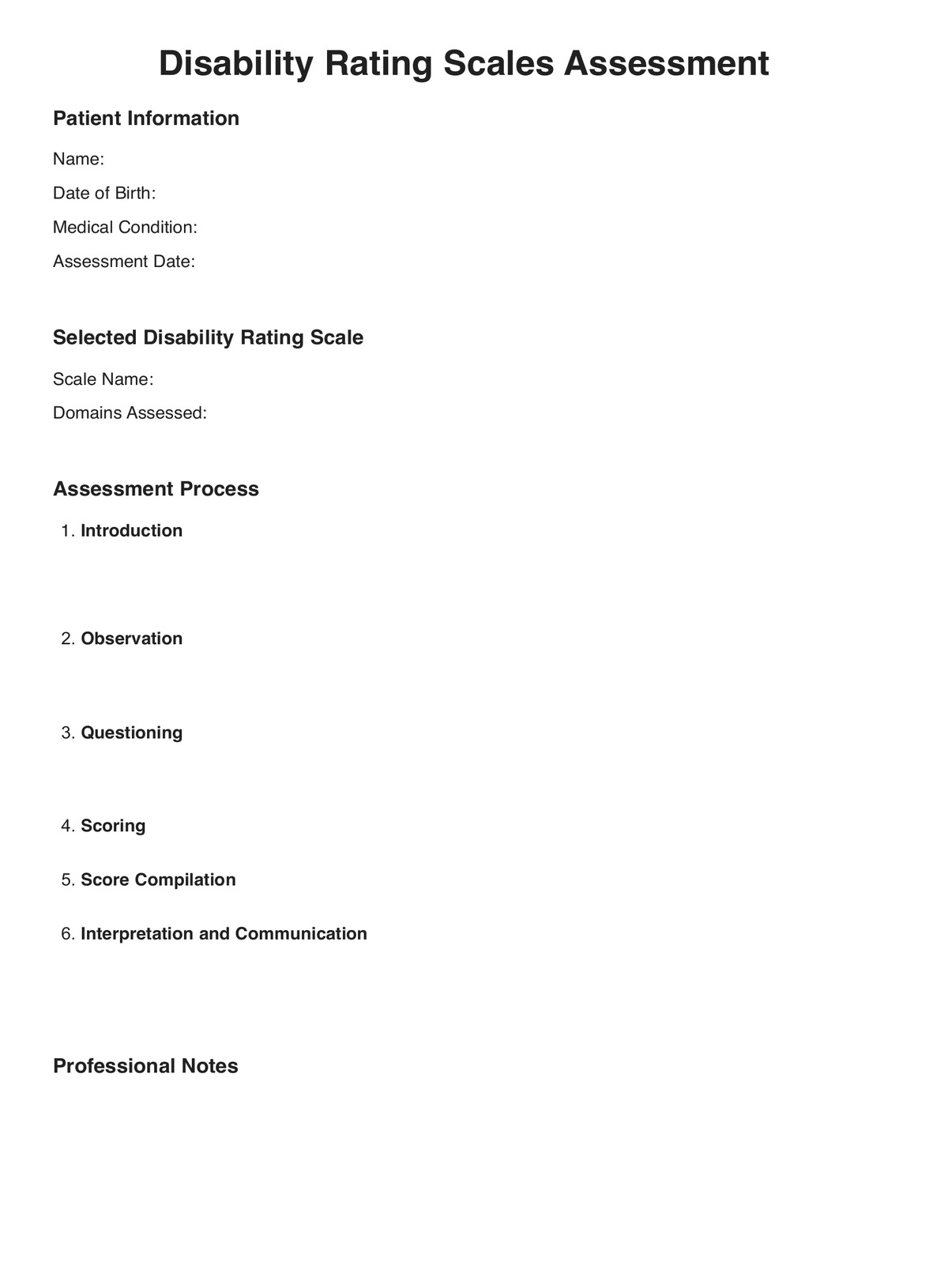Disability Rating Scales are used by healthcare professionals, therapists, caregivers, and researchers to assess and quantify functional limitations and impairment in individuals across various domains.

Disability Rating Scales
Enhance your ability to determine functional limitations for patients with precision and accuracy using Disability Rating Scales. Improve patient care today.
Disability Rating Scales Template
Commonly asked questions
Disability Rating Scales are used when evaluating an individual's level of impairment, or disability is necessary, such as during clinical assessments, treatment planning, progress tracking, legal proceedings, and research studies.
Disability Rating Scales involve selecting an appropriate scale based on the individual's condition, administering the assessment through observation and questioning, scoring the responses, and aggregating scores to determine an overall disability rating. The results aid in diagnosis, treatment planning, and decision-making.
EHR and practice management software
Get started for free
*No credit card required
Free
$0/usd
Unlimited clients
Telehealth
1GB of storage
Client portal text
Automated billing and online payments











